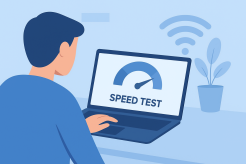Are Introductory Offers Worth It? What to Watch Out for in Fine Print

Introductory offers can feel like a golden ticket—discounted prices, bonus features, and no upfront costs. But are these deals truly worth it in the long run? Or are they traps wrapped in flashy marketing?
Let’s break down how introductory offers really work, what hidden details you should watch for, and how to make sure you’re getting the best deal possible.
What Are Introductory Offers?
Introductory offers are promotional deals provided by internet, mobile, and cable service providers to attract new customers. These offers usually include:
Reduced prices for a set period (e.g., first 6–12 months)
Free installation or activation
Bonus features like extra speed, data, or channels
They’re designed to be attractive, but once that initial period ends, your bill often jumps—sometimes dramatically.
The Appeal of Intro Offers: Why Everyone Bites
Who doesn’t want to save money upfront?
These limited-time offers are great for:
Budget-conscious shoppers
People trying out a new service or provider
Temporary residents (like college students)
Bargain hunters
Before you sign up, though, it’s smart to compare and save with the best broadband deals available now to make sure you're not missing out on better long-term value.
Common Fine Print You Need to Watch Out For
The biggest pitfalls of introductory offers lie in the fine print. Here's what you should always look out for:
1. Price Increases After the Intro Period
That super low $29.99/month deal? It may shoot up to $79.99 once the intro period ends.
2. Contract Commitments
Some offers require a 1- or 2-year contract, meaning you’ll be locked in even after the price goes up.
3. Early Termination Fees (ETFs)
Leaving before your contract ends can cost you hundreds in cancellation fees.
4. Limited Availability
Deals might only apply to new customers, specific zip codes, or certain bundles.
5. Equipment & Installation Fees
The monthly price might not include:
Modem/router rental
Setup or technician fees
Taxes and surcharges
6. Speed Throttling or Data Caps
Some providers cap your data or reduce your speed after a certain usage limit, which can be especially frustrating for streaming or remote work.
How to Read the Fine Print Like a Pro
Before you say "yes," make sure you:
Read the Terms and Conditions
Ask about full pricing after the promotional period
Clarify any contract obligations or penalties
Request a breakdown of taxes, equipment, and fees
Don’t be afraid to take your time and ask questions. A deal isn’t a deal if it costs you more later.
Who Benefits the Most from Introductory Offers?
Intro deals can work well for:
People who move often or don’t need long-term service
Users who plan to switch providers regularly
Shoppers willing to negotiate or cancel when the promo ends
When to Avoid Intro Offers
You should be cautious if:
You don’t want the hassle of switching providers frequently
You prefer stable monthly bills over surprises
You need consistent high-speed service for work or business
If you use internet for professional reasons, also consider the pros and cons of using mobile broadband for professional use before signing any deal.
Are Long-Term Deals Better Than Intro Offers?
It depends.
Long-term plans may offer:
Predictable pricing
Bundled perks
Priority support
But they usually don’t offer the same flashy upfront savings. Still, if customer service matters to you, it’s worth checking out mobile broadband providers with the best customer service.
Tips to Make the Most of Introductory Deals
Here’s how to get the most bang for your buck:
1. Mark Your Calendar
Set a reminder for when the promo ends so you're not surprised.
2. Negotiate
Call your provider before the offer expires—you might be able to extend the deal or get a better one.
3. Bundle Wisely
Sometimes bundling internet, TV, and phone can lower your cost—but only if you actually use all the services.
4. Switch Strategically
Jump to another provider offering a new promo once your deal ends.
Compare the Best Deals Before You Commit
Want a smarter way to shop for internet? Head over to the latest broadband internet deals to find the right match for your needs and budget. These comparisons highlight promos and what happens after they end—so you’re never caught off guard.
Conclusion: Proceed with Caution, Not Fear
Introductory offers can definitely save you money—but only if you go in with eyes wide open. Read the fine print, understand the full cost, and make sure the deal fits your lifestyle. It’s easy to get swept up in the savings, but smart shoppers know the real value is in the long-term payoff.
Related Posts

Tue, Dec 9, 2025 2:32 AM
Internet BundlesIs Your ISP Throttling Your Internet? Here’s How to Tell
This explains the signs, testing methods, and solutions to prevent speed slowdowns and maintain consistent performance.

Mon, Dec 8, 2025 5:48 AM
Internet BundlesSmarter Ways to Get Internet Without a Phone Line or Cable TV
Learn the best ways to get internet without cable TV or a phone line. Explore DSL, fiber, satellite, and fixed wireless options with a simple, natural guide for today’s cord-cutting households.

Mon, Dec 8, 2025 2:24 AM
Technology Broadband InstallationHow to Check and Fix Ethernet Port Problems
Learn how to diagnose and fix Ethernet port issues with this complete troubleshooting guide. Covers physical checks, cables, software settings, and when to contact a technician.

Fri, Dec 5, 2025 12:20 PM
TechnologyWhy You Need a VPN Today (and How It Protects You Online)
Learn how VPNs protect your data, block tracking, and secure your connection across every device.

Thu, Dec 4, 2025 3:30 AM
Internet BundlesBest Fiber Internet Providers in the US : Fast, Reliable, and Worth It
Discover the top fiber internet providers in the US, their speeds, pricing, and customer satisfaction ratings. Find the best plan for fast, reliable, and uninterrupted internet.